So, how many grains in a pound of gunpowder? What are grains anyway? If you are planning to custom your ammo, it is important to know about bullet grains and the measurement of gun ammo powder.
This post will shine more depth on this issue and help you measure the right proportion and save more gun powder. Based on the information provided, you can measure the right gun powder proportion for your custom ammo.
Let’s dive into the article with us!
How Many Grains In A Pound of Gunpowder?
As you already know, one pound of gunpowder equals 7000 grains of powder.
But the “bullet grain” does not indicate the weight of gunpowder inside alone; it also includes the shells.
Not all bullets contain the same amount of powder. The charge of gunpowder is powder concentration, or how many grains of powder are in the shell.
For these reasons, the number of bullets from 1 pound of gunpowder depends on the bullet’s size and gunpowder charge. The bigger the bullets, the more gunpowder they contain.
The higher the gunpowder charge, the fewer bullets it can make.
For example, the most common powder charge is 5, which means that the load contains 5 grains of gunpowder.
So, to figure out the exact number, you first have to determine what size and gunpowder charge the bullets come with. After you get the number, take 7000 grains and divide with the charge rate to get the exact number.
For example, if a 9mm load has a charge rate of 5, one pound of gunpowder can make 1400 rounds. (7000/5 = 1400). This number is only precise when the bullets are loaded with an equal amount of gunpowder.
| Bullets | Number of rounds |
|---|---|
| .25acp bullets | 6359 |
| .223 Remington | 300 |
| .22 Long Rifle | 230 |
| .38 Smith & Wesson Special | 2500 |
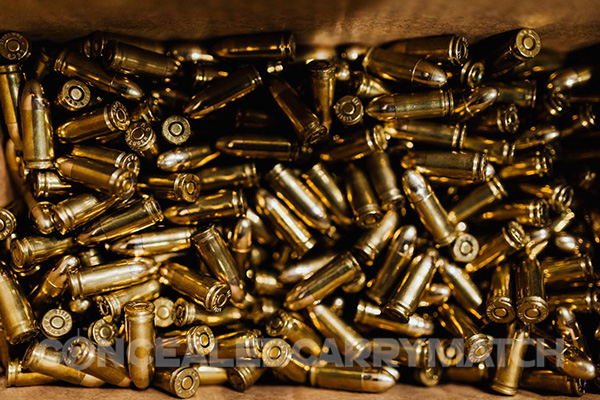
What Are Bullet Grains?
The new gun owners may not know what the “bullet grain” means. Have you ever looked at a box of ammo and seen a “100-grain” description on its side?
Don’t undervalue this number as it affects the accuracy, terminal ballistics, and recoil of the bullets. In short, the grain is one of the standard measuring units, such as pounds, kilograms, and grams, for example.
Since the unit is not as prevalent as the other ones, like pounds or ounces, you may struggle to imagine the weights of things in grain. For example:
- The weight of a one-dollar bill is around 15.4 grains.
- The weight of a paper sheet (A4) is around 77 grains.
- The weight of a small battery is around 385 grains.
Compared to the other popular measuring units, grain is many times smaller. For example, 1 gram equals 15, 43 grains, and the figure for 1 ounce is 437.5 grains.
So why is the term “bullet grain” popular? It is because the weights of all the bullet types are measured in this unit. So the initial “100-grain” description indicates that one bullet in that ammo box weighs 100 grains.
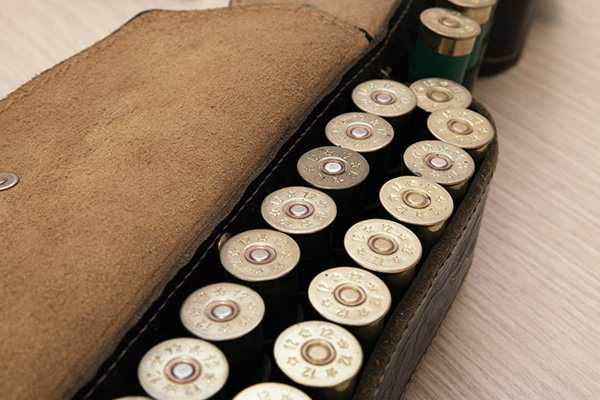
Grains Of Powder Per Pound
One pound of gunpowder equals 7000 grains. This ratio is applicable to all types of gunpowder. Since the grain unit is extremely small, it is the most accurate and popular measuring unit for the gun powder.
| Unit Of Measurement | Number Of Grains |
|---|---|
| 1 pound of lead | 7000 |
| 1 gram | 15.43236 |
| 500 grams | 7716 |
| 1 ounce | 437.5 |
Many popular ammo brands often weigh more than 100 grains, but the range is significantly wide. For example, the lightest ammo type weighs around 17 grains, while the heaviest ammo on the market weighs up to 700 grams.
Many people often misunderstand that grain indicates the proportion of gunpowder contained in the bullets. To be more precise, it is a unit used to measure the bullets’ weight.
It is impossible to tell the exact weights of the bullets or compare the two types of ammo just by looking at them. Therefore, the manufacturers often include the figure on the package.
However, a “100-grain” bullet doesn’t mean that it contains 100 grains of gunpowder. It also includes the bullet shells and other small components, not the powder inside alone.

Why Do You Need To Choose The Right Bullet Grains?
If you want to make customized ammo, figuring out the exact grains for each load is crucial. It helps you purchase the right amount of gunpowder and doesn’t waste any amount.
In addition, the ammo weight also affects the shooting accuracy, especially for short-distance shooting. You may notice that your precision increases when changing the bullets with different weights.
Specific bullet grains even have better penetration than others. This is crucial for the hunters, who need the best penetration and expansion of each shot.
If you plan to make 200 9mm loads with a powder charge of 5, then you need 1000 grains of gunpowder (200 x 5 = 1000). As one pound equals 7000 grains, you will need 1/7 pounds of gunpowder (500/7000 = 1/7).
Since gunpowder is expensive, you may not want to waste a single grain.
If you want to make the larger bullet sizes, just follow the formula above to calculate the exact proportion of gunpowder you need.
When making the ammo, ensure that each load contains the matching proportion of the bullets with their powder charge. If the powder inside is too much or insufficient, it will affect the accuracy and shooting process.
| Type Of Bullet | Number Of Grains Of Gun Powder |
|---|---|
| 223 | 25 grains |
| 9mm Luger | 147 grains |
| 308 Cartridge | 45 grain |
| 22 Magnum | 30-50 Grain |
| 50 Cal Bullet | 660 Grains |
| Shotgun Shell | 150 Grains |
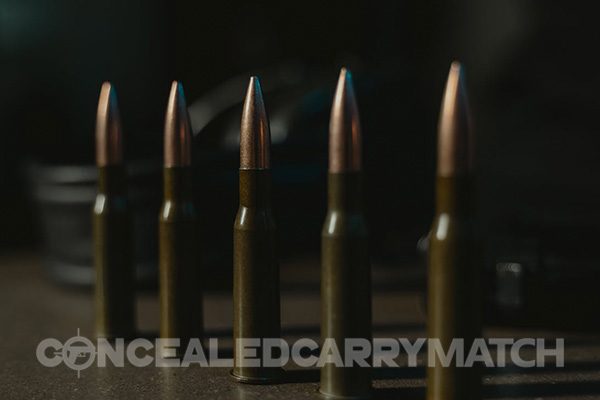
How To Select The Right Weight For Your Ammo?
Many new gun owners often skip the bullet grain when choosing the ammo.
Whether you want to make your customized ammo or plan to purchase an ammo box for your gun, determining the ammo weight is crucial.
So we have covered the formulas and methods to calculate the exact bullet grains for your ammo. Let’s determine which ammo weight is suitable for your preferences.
You may see the terms like plinking or maximum accuracy on a bullet box description. While plinking isn’t affected much by bullet grains, you can skip it for now. The more critical factor is maximum accuracy.
This term indicates which weight works best with specific weapons types. You can ask for advice from professional gun makers and owners about your weapon to figure it out.
Compare Smaller vs Larger Grains

Many people wonder if heavy or light bullets deliver better shooting accuracy and recoil. The answer is that it depends because the smaller powder charge equals a smaller size and surface.
As a result, the small bullets are ignited. They burn faster in the gun, which means the bullets will have a higher velocity after leaving the barrel. Therefore, you will get more speed and a more aligned trajectory.
For these reasons, smaller grains are ideal for hunting and short-range shooting, which give you the best penetration and speed. However, the small bullets are more susceptible to strong winds and not ideal for windy weather.
The heavy bullets will decrease in accuracy when shooting at long ranges. They are more likely to miss the target slightly from 300 yards or further distance.
However, heavy grains come with some significant advantages. They are not affected much by winds and gravity, giving you more accuracy when shooting at short and medium distances.
Nevertheless, go for the type that suits your weapon. Do some research to figure out the best bullet grains for your gun before considering adjusting the weight of the bullets.
For more in-depth comparisons, consider watching the video below.
Final Thoughts
In conclusion, understanding the measurement of gunpowder in grains can be crucial for firearm enthusiasts and those involved in ammunition manufacturing.
When it comes to determining how many grains are in a pound of gunpowder, it’s essential to recognize that there are 7,000 grains in a pound.
This standardized measurement allows for precise calculations and consistency in load development. Whether it’s for recreational shooting, competition, or self-defense, knowing the exact quantity of gunpowder in a pound ensures the proper functioning and safety of firearms.
So, next time you find yourself wondering “How many grains in a pound of gunpowder?” remember the value of 7,000 grains as a fundamental measurement unit in the world of firearms and ammunition.
Last Updated on November 21, 2023 by




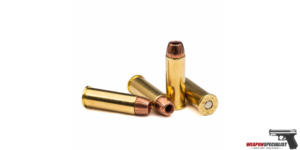
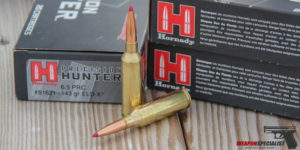

Why is the weight of gunpowder measured in grains?
The use of grains as a unit of weight for gunpowder dates back to the early days of firearms and ammunition. It originated from the practice of measuring gunpowder by volume using a small scoop or container called a “grain.” Over time, the weight of the grain container became standardized, and it is now a widely used unit of measurement for gunpowder.